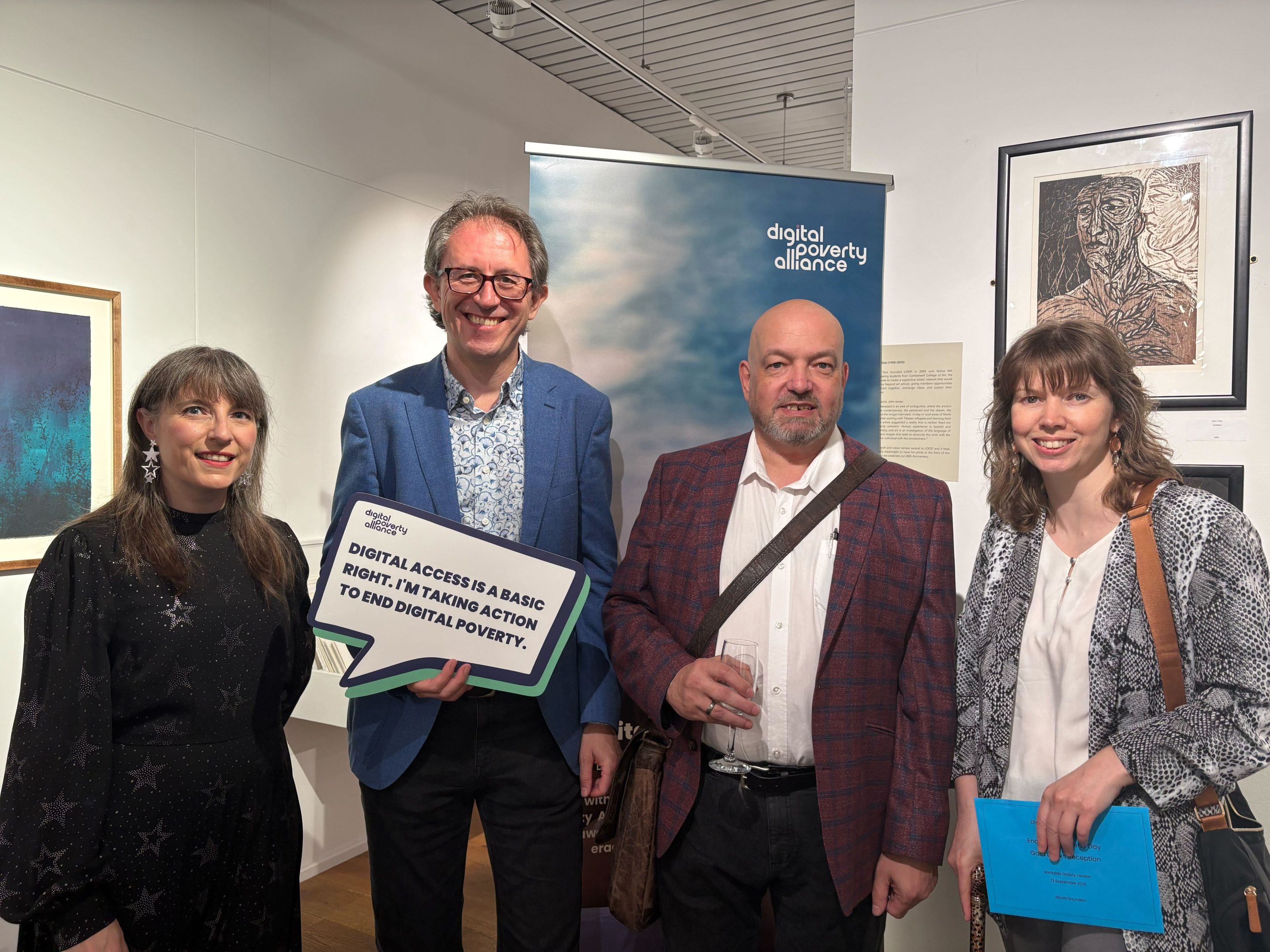As a front-end developer and accessibility professional, it matters to me that people with disabilities can use the sites I build. I put a lot of care and attention into this area of my work.
I recently joined some of my Studio 24 colleagues in attending the first UK Digital Inclusion Awards, run by Digital Poverty Alliance. I was promptly reminded of another barrier to online access: digital poverty. The event has encouraged me to reflect on my privileged experience as a developer working in a digital agency, and what we can do to make our corner of the internet more inclusive.

What is digital poverty?
It’s the inability to interact with the online world fully, when, where and how an individual needs to. There are many contributing factors, the biggest of which are:
- Financial poverty
- Infrastructure issues (often geographical)
- Insufficient skills
One in seven adults and one in five children live in digital poverty in the UK today.
What strikes me about digital poverty is its insidious and self-perpetuating nature. When a person can’t get online because they can’t afford broadband or a device to connect with, they’re excluded from activities that so many of us generally take for granted.
Being unable to access exclusive online discounts on goods and services might not seem like much of an issue. But if you’re having to get by on a limited budget, every bit you can save can really make a difference.
It’s not just about online shopping
A lot of essential services are moving online. Imagine being unable to book a GP appointment, manage your bank account or benefits, or access vital information. If you can’t get online to find and apply for jobs, how are you supposed to even begin trying to escape poverty?
It’s worth noting the intersection of disability and digital poverty, with disabled people more likely to be living on a lower income. And, of course, if essential services are inaccessible this puts disabled people at a further disadvantage. Digital poverty also intersects with ethnicity in a similar way.
Disconnection leads to greater isolation
People experiencing digital poverty are more likely to be infrequent users of the internet. This results in fewer opportunities to pick up and develop digital skills, with all the educational, employment and financial disadvantages that entails.
It also affects a person’s confidence and their willingness to get online in the first place, and leaves them potentially more vulnerable to bad actors when they do. Having to rely on family, friends or community hubs to get online can be stigmatizing.
Digital poverty can make it a struggle to keep in touch with loved ones, leading to a growing sense of social isolation and a negative impact on mental health.
Tackling digital poverty
There is no single answer to digital poverty. It needs action at all levels and on multiple fronts.
It was uplifting to see the different people and organisations coming together to create change. At the Digital Inclusion Awards I saw corporate and public groups organising to donate devices, council and community-led training and awareness initiatives, and a scheme collaborating with the disabled community to ensure that digital services are accessible.
What can those of us working in digital do?
Beyond making sure that our work is accessible, it’s important to acknowledge that our online experience is not typical of the experience for many people. We generally work with very powerful devices, using broadband connections that are fast and stable. Data is not something that we’re generally concerned about. This may go some way to explaining why web page size continues to grow year on year.
Things that seem to work well for us can be really problematic for people with a “low-tier” device, limited data allowance, or in a rural area with poor connectivity. We need to move away from the bloat that we have become accustomed to and focus on performance.
Web pages are becoming more content-rich, with huge images, videos, fancy web fonts, and other multimedia assets. Complex user interface (UI) designs often involve lots of CSS and JavaScript. We can start by asking ourselves how much of all of this is really necessary to a website’s core purpose, and then work on optimising what remains.
If a project really doesn’t allow for stripping back by default, it’s worth considering providing a special “bare bones” version alongside the “fully featured” version. Both CNN and DuckDuckGo provide “Lite” versions of their sites, so people experiencing data poverty can still find news and information online.
Services like TinyPNG make it easy to optimise and compress images. Optimising video is more involved but there are things that can be done. Avoid autoplaying videos because this forces video data to be downloaded immediately.
Serve web fonts as WOFF2 files; they are widely supported and offer the best compression. Variable web fonts combine multiple weights into a single file, reducing the number of HTTP requests but resulting in a larger file size. We can convert variable font files to WOFF2. Web fonts typically contain more character glyphs than are actually needed, so subsetting variable fonts is a good practice – but check whether your license allows it.
The amount of JavaScript in use is another significant issue. Byte for byte, no resource affects page speed more, so we should be looking at ways of optimising our JavaScript.
Although we can’t do much about the systemic causes of digital poverty, there is plenty we can do to make sure we are delivering an accessible and inclusive experience for people.
